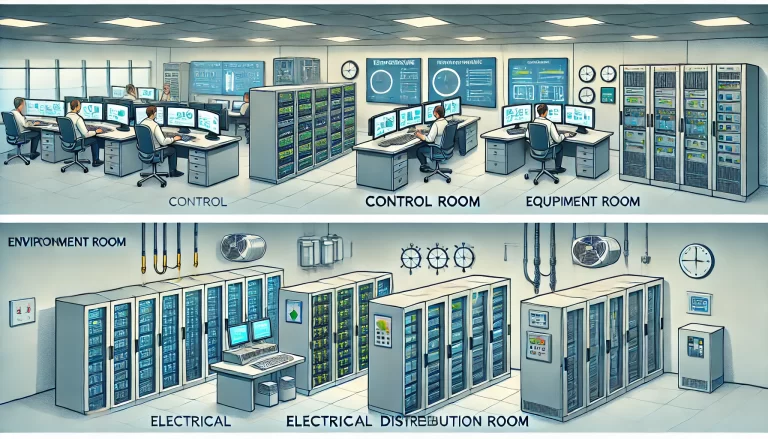Programmable Logic Controllers (PLCs) are the cornerstone of modern industrial automation systems. The choice of a PLC programming language has a significant impact on the efficiency, maintainability, and performance of these systems. With a variety of programming languages available, each with its own strengths and suitable applications, it is essential to understand their characteristics to make an informed choice. This article provides an in-depth comparison of common PLC programming languages and offers guidance on their selection based on practical considerations.

Common PLC Programming Languages
1. Ladder Diagram (LD)
Ladder Diagram (LD) is one of the most widely used graphical programming languages in PLC development. Originating from relay control systems, LD uses symbols resembling relay contacts, coils, and logic gates to represent control logic.
Advantages:
Intuitive Visualization: Closely corresponds to electrical schematic diagrams, making it easy for electrical engineers to understand and use.
Broad Applicability: Supported by most PLC systems, ensuring compatibility across platforms.
Disadvantages:
Scalability Issues: Becomes cumbersome and difficult to manage for complex control logic.
Reduced Readability: In large-scale programs, readability can significantly decrease.

2. Instruction List (IL)
Instruction List (IL) is a textual language similar to assembly language. It uses mnemonics to represent various operations and is suited for environments without access to computers.
Advantages:
Compact Code: Programs written in IL are typically more concise, occupying less memory.
Enhanced Flexibility: Offers greater control when implementing complex logic.
Disadvantages:
Steep Learning Curve: The abstract nature of IL makes it challenging for beginners to master.
Limited Readability: Not ideal for collaborative development and maintenance due to its dense syntax.
3. Function Block Diagram (FBD)
Function Block Diagram (FBD) employs graphical symbols resembling logic gates to represent control logic. Each block performs a specific function, such as logical operations or mathematical computations.
Advantages:
Modular Design: Enables modular programming, simplifying the construction of complex systems.
Visual Clarity: Graphical representation makes control logic easier to comprehend.
Disadvantages:
Limited Support: Not all PLC systems provide full support for FBD.
Overhead for Simple Systems: For small-scale systems, FBD may appear unnecessarily complicated.

4. Sequential Function Chart (SFC)
Sequential Function Chart (SFC) is a graphical language tailored for sequential control programs. It uses state transition diagrams to depict different system states and their transition conditions.
Advantages:
Specialized for Sequential Logic: Ideal for applications requiring step-by-step control, such as assembly line automation.
Team Collaboration: State diagrams facilitate clear communication and maintenance within a team.
Disadvantages:
Limited Versatility: Less suitable for systems without sequential logic.
Learning Time: Requires familiarity with state diagram concepts, which can be a barrier for novices.

5. Structured Text (ST)
Structured Text (ST) is a high-level programming language resembling Pascal or C. It is well-suited for complex control algorithms and data processing tasks.
Advantages:
Advanced Capabilities: Supports complex mathematical operations and data processing.
Programming Flexibility: Offers a high degree of freedom for developing intricate logic.
Disadvantages:
Higher Skill Requirement: Demands proficiency in general-purpose programming languages, posing a challenge to beginners.
Reduced Intuitiveness: Lacks the visual clarity of graphical programming languages.

Factors to Consider When Choosing a PLC Programming Language
When selecting a PLC programming language, the following factors should be evaluated:
Application Requirements:
Ladder Diagram is suitable for logic control.
Structured Text excels in implementing advanced algorithms.
For sequential processes, SFC provides the best clarity.
System Complexity:
Large and complex systems benefit from modular languages like FBD.
Simple systems may prefer LD or IL for straightforward implementation.
User Expertise:
Electrical engineers may find LD more accessible.
Programmers with experience in traditional coding may prefer ST.
Hardware Compatibility:
Verify the language support of your PLC hardware. For example, not all PLCs support FBD or ST.

Summary Comparison Table
| Language | Visual/ Textual | Key Strengths | Main Weaknesses | Best For |
|---|---|---|---|---|
| Ladder Diagram (LD) | Visual | Intuitive, Broadly Compatible | Cumbersome for Complex Logic | Electrical Engineers, Logic Control |
| Instruction List (IL) | Textual | Compact, Flexible | Hard to Learn, Low Readability | Memory-Constrained Applications |
| Function Block Diagram (FBD) | Visual | Modular, Intuitive | Limited Support, Overkill for Simple Systems | Complex Modular Systems |
| Sequential Function Chart (SFC) | Visual | Clear for Sequential Logic | Limited Versatility, Learning Curve | Sequential Control Processes |
| Structured Text (ST) | Textual | Powerful, Flexible | High Skill Requirement, Less Visual | Advanced Algorithm |

Conclusion
The choice of a PLC programming language hinges on application requirements, system complexity, and user expertise. For beginners or straightforward logic control, Ladder Diagram remains a practical choice. For advanced control or data processing, Structured Text offers unparalleled flexibility. By understanding the characteristics and suitability of each language, developers can optimize their programming efficiency and create robust industrial automation solutions.
